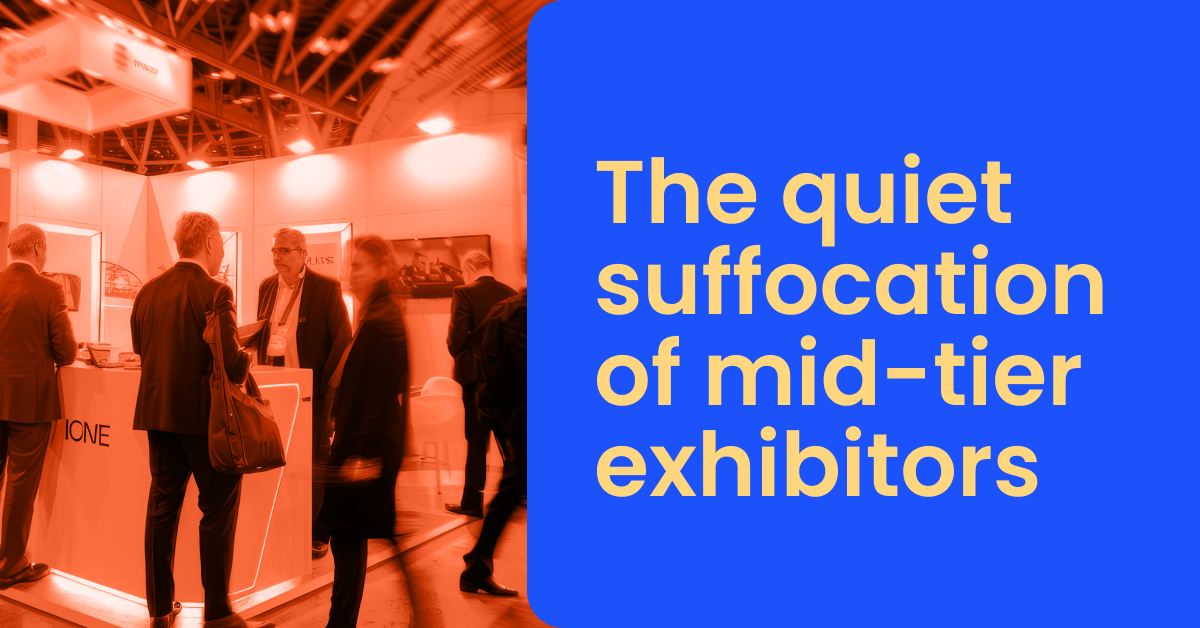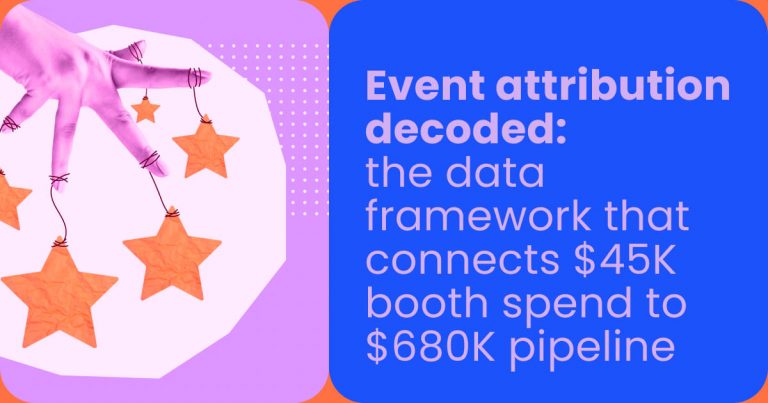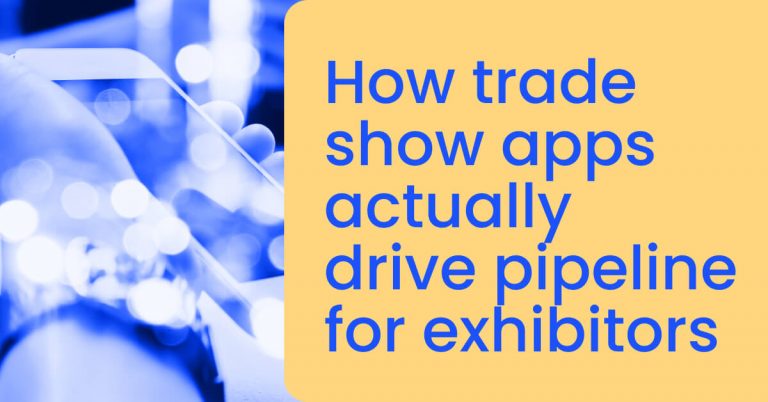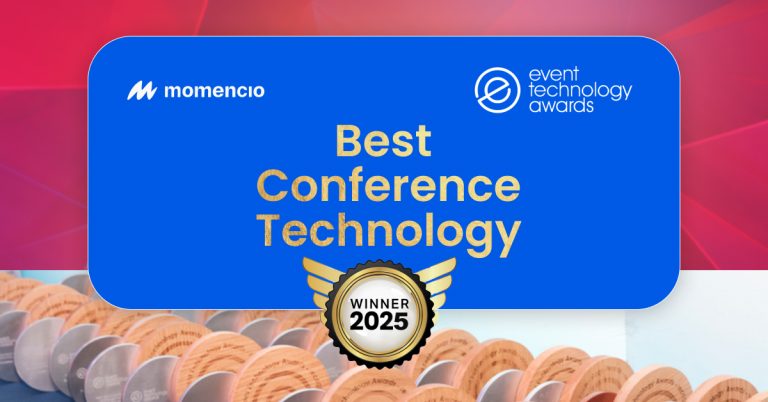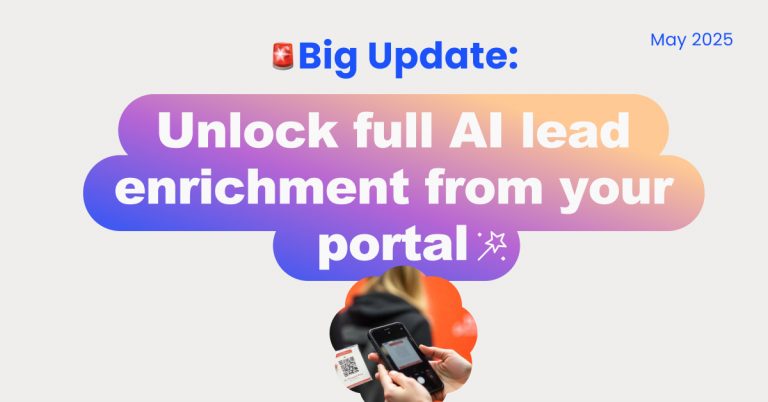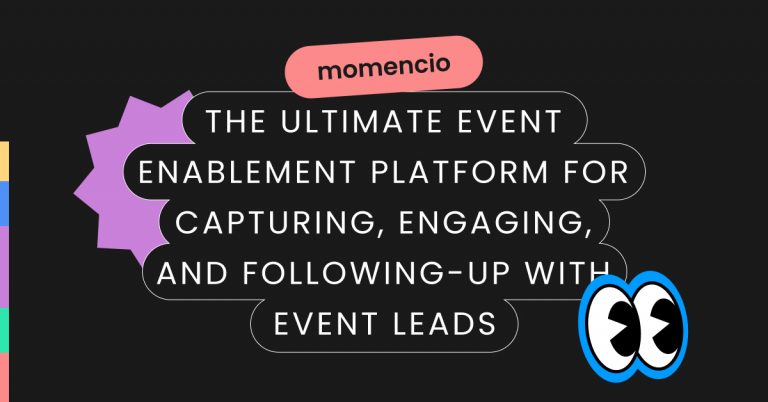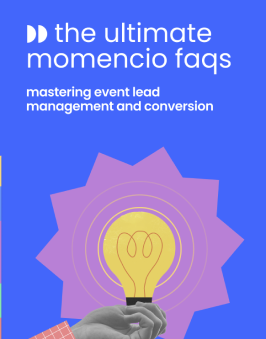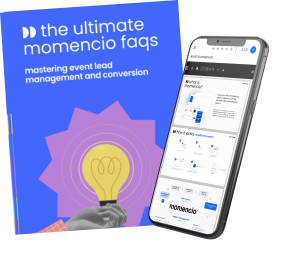Why exhibitors spend big but struggle with event ROI
Walk into any trade show floor and you will see the spectacle: massive booths glowing with LED walls, startup pods buzzing with energy, and a middle band of exhibitors wedged somewhere in between. This middle segment often represents established but not giant companies—serious enough to invest heavily in events, but not large enough to dominate headlines or secure lavish sponsorships. For these businesses, the financial commitment is steep.
Consider the standard package: booth space can run into tens of thousands of dollars, often excluding essentials like furniture, internet, or even basic electrical fittings. Add in the cost of staffing, travel, accommodation, and promotional materials, and the outlay per event is staggering. For a mid-tier exhibitor, it is not unusual for a single show to consume a six-figure marketing budget.
Yet despite these investments, many walk away questioning the returns. The event floor may have looked busy, the conversations might have felt promising, but weeks later the sales team is often chasing leads that have gone cold. The paradox of events is clear: high costs up front, uncertain results afterward.
The question that demands investigation is why, after spending so much, exhibitors still struggle to turn event participation into measurable pipeline. The answer lies not in the size of their booths or the number of badge scans, but in how information flows—or fails to flow—once the show begins.
The hidden cost of waiting
In financial terms, the single biggest source of waste isn’t booth design, travel, or swag. It’s time. Specifically, the days between when a conversation happens and when a sales rep can act on it.
Research into sales responsiveness is unequivocal: responding within 24 to 48 hours can more than double conversion chances. Each additional day slashes those odds. By day seven, the lead behaves like a stranger. By day fourteen, the opportunity has effectively expired. One industry study showed conversion rates fall by more than eight-times when first follow-up is delayed beyond five minutes
This decay is rarely visible in budgets, but it is measurable in outcomes. Companies that spend $100,000 on a booth and wait a week for their lead file may see less than half the pipeline impact of peers who follow up within hours. That gap translates to tens of thousands of dollars lost not at the booth but in the inboxes that go quiet after the show.
The cruel irony is that exhibitors pay for the privilege of waiting. They pay for scanners, retrieval apps, and post-event exports, only to watch their own prospects slip away while the data is “processed.” For mid-tier players, this isn’t inefficiency. It’s the slow bleed that undermines their survival.
The ROI blackout
Post-event reports are glossy and impressive. They highlight growth, volume, and scale. But their brightness conceals what matters most.
Line items included:
- total attendance
- social media impressions
- square footage sold
- sponsor mentions
Line items absent:
- percentage of attendees with buying authority
- number of leads followed up within 48 hours
- meetings booked directly from booth interactions
- pipeline value influenced by the event
The omission is telling. Reporting headcount is simple. Reporting sales impact is not. Exhibitors are left with statistics that flatter the event’s brand but fail to defend their own spending. Internally, this gap becomes combustible. Marketing can show reach, but sales asks for revenue. The blackout between the two fuels the quiet skepticism that erodes confidence in events.
The legacy of batch mode
Why hasn’t the system changed? The answer lies in the past.
In the early days of trade shows, lead capture was manual. Cards dropped in bowls, forms filled on clipboards, names entered later. Weeks of lag was normal because speed wasn’t expected.
Badge scanners arrived in the 1980s. They modernized the surface but not the structure. Data was still centralized, cleaned, and sent back after the event. In the 2000s, digital exports replaced mailed files, but the rhythm stayed the same: batch in, batch out.
Meanwhile, the commercial world accelerated. E-commerce made receipts instant. Digital ads piped leads directly into CRMs. Marketing automation triggered follow-ups in seconds. Events, by contrast, kept their old plumbing, hiding behind the justification of “processing.” The result is an industry still operating at the tempo of fax machines in an era of real-time sales.
Where the money leaks
An exhibitor’s budget doesn’t evaporate in one stroke. It leaks at every stage.
- Booth rental and build: $40,000–$60,000. Essential, but value is only realized if traffic converts.
- Travel and lodging: $20,000 or more. A sunk cost if conversations don’t lead to meetings.
- Lead retrieval systems: $5,000+. Ironically, these fees buy access to data the exhibitor generated themselves, delayed until after intent fades.
- Marketing materials: $10,000. Without fast follow-up, brochures become landfill, not leverage.
- Staff time: hundreds of hours. Opportunity cost mounts if those hours yield no pipeline.
The math is brutal. A $100,000 event investment, followed by delayed leads, may produce less pipeline than a $20,000 digital campaign with instant attribution. The loss isn’t in visibility. It’s in velocity.
Myths exhibitors still believe
Exhibitors continue to accept practices that undermine them because myths persist.
- Myth: Booth placement determines ROI. Reality: placement drives volume, but conversion depends on follow-up.
- Myth: More scans equal more pipeline. Reality: large cold lists underperform small hot ones.
- Myth: Post-event reports prove success. Reality: reports measure reach, not revenue.
- Myth: Waiting ensures clean data. Reality: accuracy without speed equals irrelevance.
These myths endure because they’re convenient. They let organizers frame success in terms of size and exhibitors rationalize poor outcomes as bad luck. The truth is sharper: ROI fails because systems suffocate leads before sales can breathe.
The chain of choke points
A single booth conversation travels a long road before it reaches a sales rep.
- Scan stored in retrieval vendor’s system.
- File processed and deduplicated.
- Export released to exhibitor.
- Operations imports into CRM.
- Leads manually routed.
- Sales finally begins outreach.
Each link in the chain has purpose, but together they create delay. The result: by the time the rep sends the first email, the prospect has already forgotten the booth. The system doesn’t fail in one dramatic way. It fails by design, slowly enough that exhibitors rarely notice until pipeline reviews expose the damage.
The squeeze on mid-tier companies
Large sponsors survive because visibility cushions their inefficiency. Startups survive because novelty extends their runway. Mid-tier exhibitors don’t have that buffer. Their budgets are heavy relative to their size, and their survival depends on proving ROI with precision.
When leads arrive late, their proportional loss is far greater. A sponsor can absorb weak conversion as brand spend. A startup can write it off as exposure. A mid-tier company has to explain to its board why six figures turned into silence. That explanation is often unsatisfying, and the quiet result is churn. These are the companies that disappear from show floors year to year, replaced by new hopefuls destined to learn the same lesson.
The cost of silence
What happens if nothing changes? The math compounds. Each year, mid-tier exhibitors spend heavily, convert poorly, and face internal pressure to withdraw. Participation shrinks, floor diversity erodes, and events rely even more heavily on giant sponsors to fund the spectacle. The ecosystem narrows, making it harder for new challengers to break through and for mid-market players to sustain themselves.
This is not a distant forecast. It is already happening in smaller shows where exhibitor churn is high. The silence of mid-tier companies withdrawing is masked by banners declaring growth, but the trend is visible to anyone who compares floor plans over time.
Is there an alternative?
There is a way out, but it does not come from waiting for the system to reform itself. It comes from exhibitors reclaiming control.
The companies that break the cycle are those that refuse to wait for delayed exports. They capture leads directly, enrich them instantly, and trigger personalized follow-up while the attendee is still in “event mode.” They integrate seamlessly into their CRM so no note, scan, or signal is lost.
momencio is an event tech platform that’s built for this purpose. By compressing capture, enrichment, and follow-up into a single workflow, momencio restores the logic of events, that a face-to-face conversation should not end in a cold email weeks later but in a live opportunity tracked in real time.
For mid-tier exhibitors, the choice is stark. Continue funding a system that suffocates them, or adopt one that gives them air. The survival of this segment — and the balance of the event economy — depends on which path they take.
